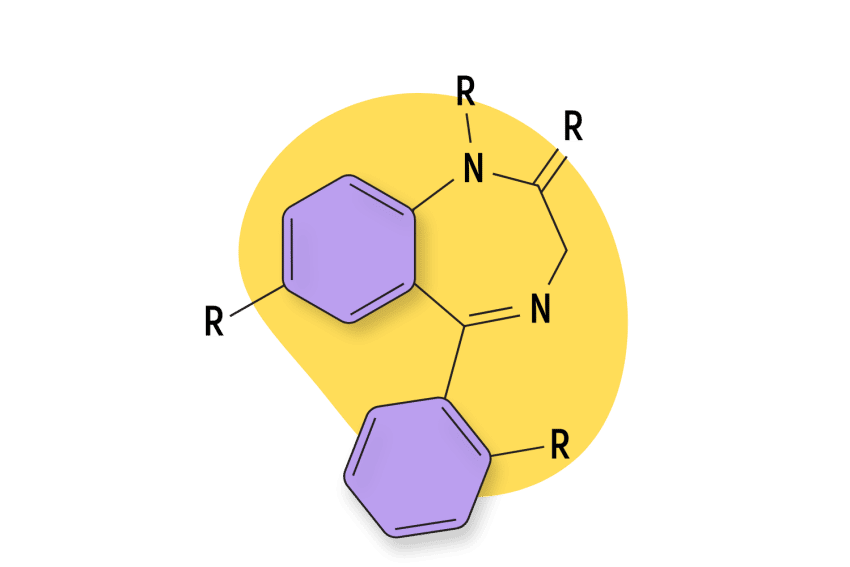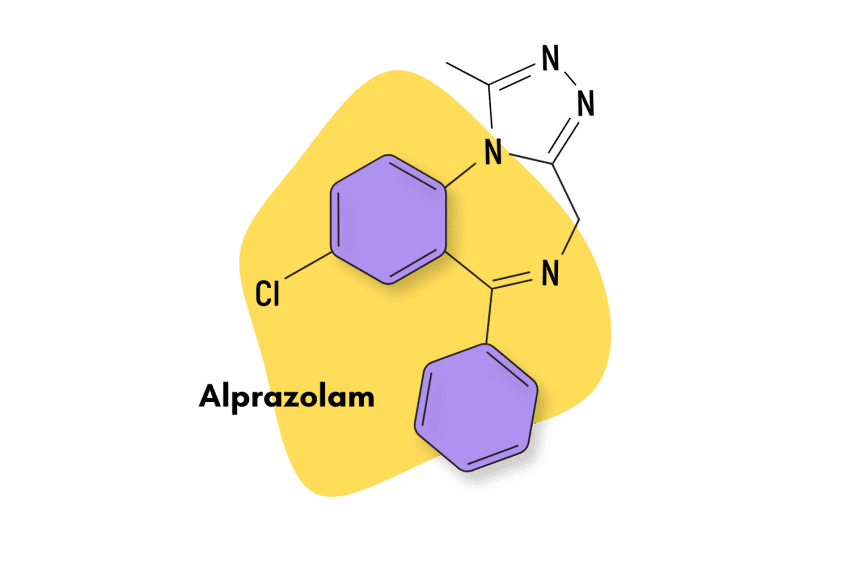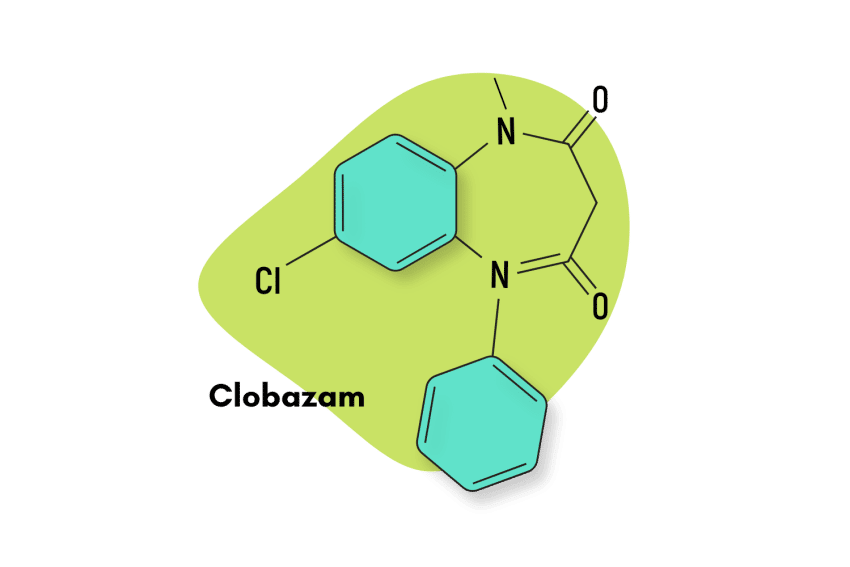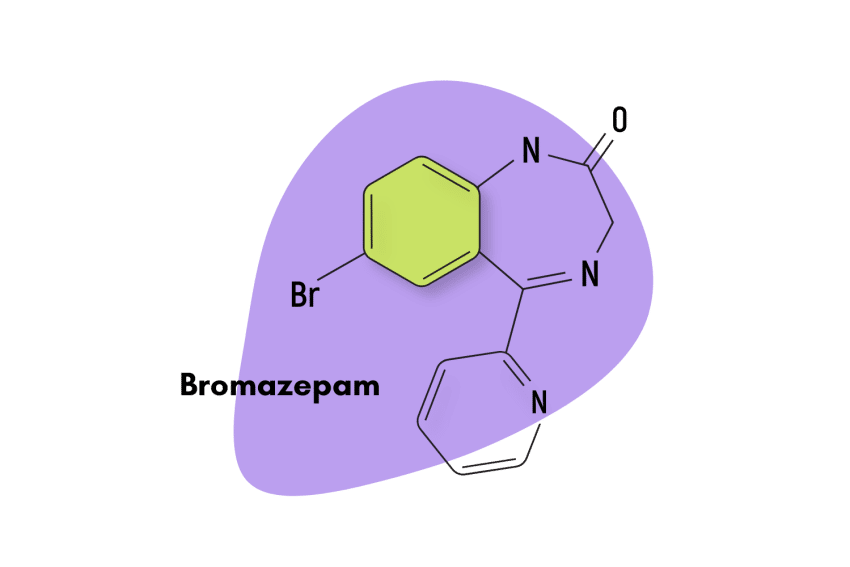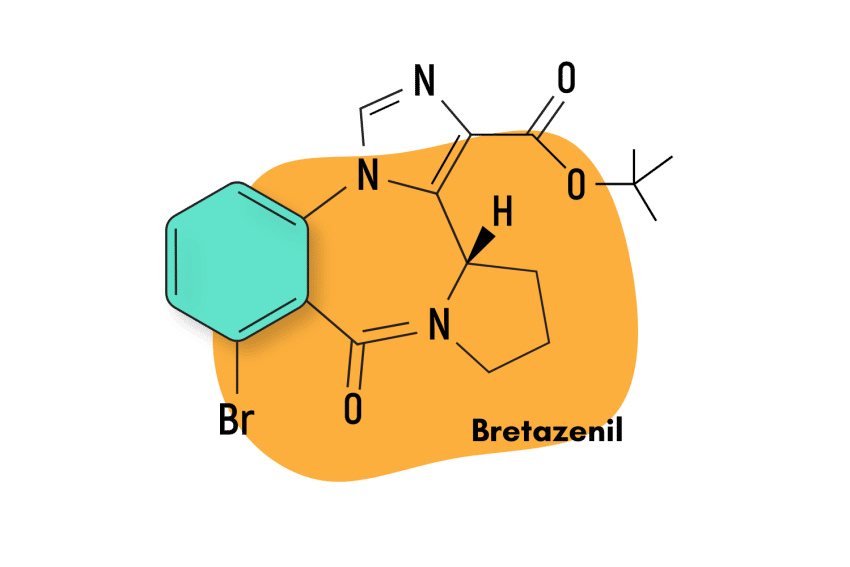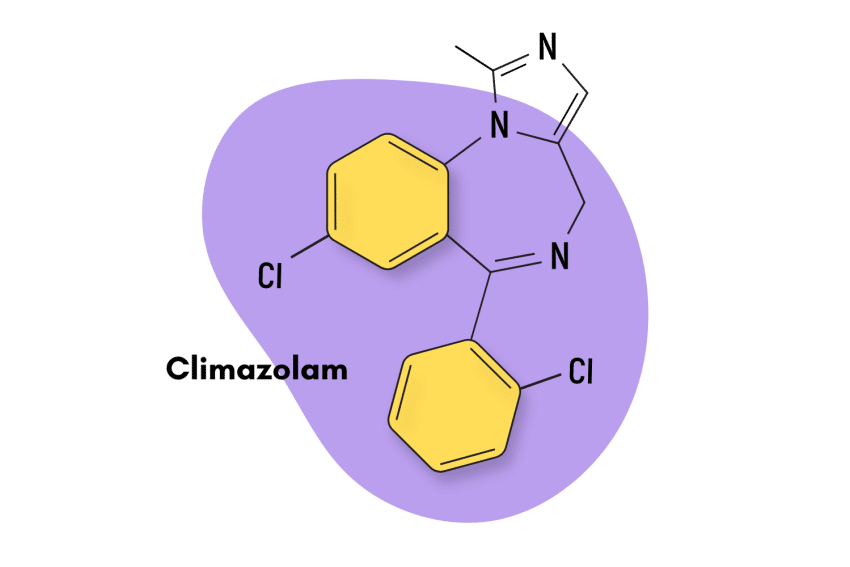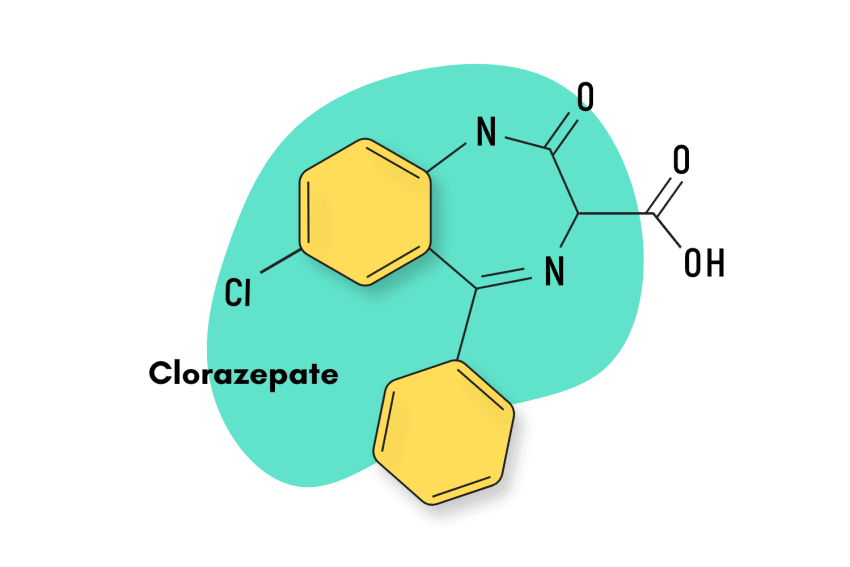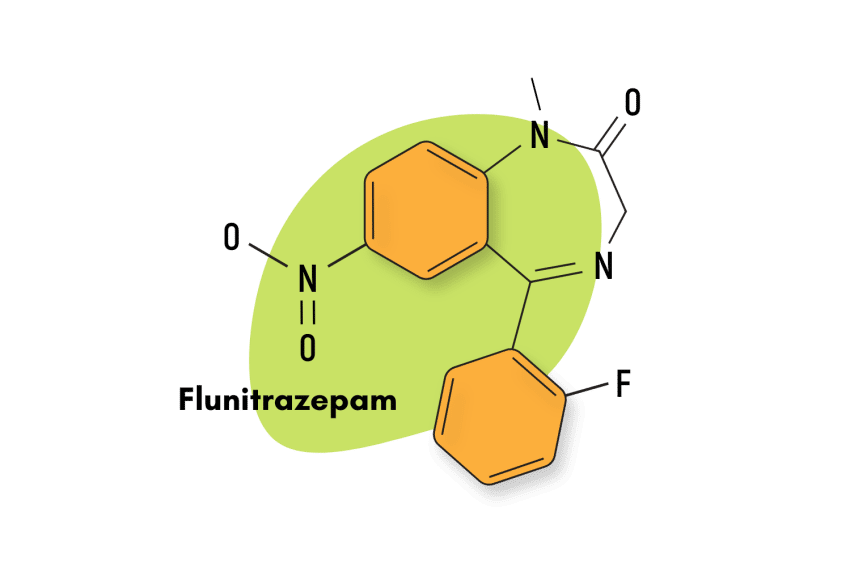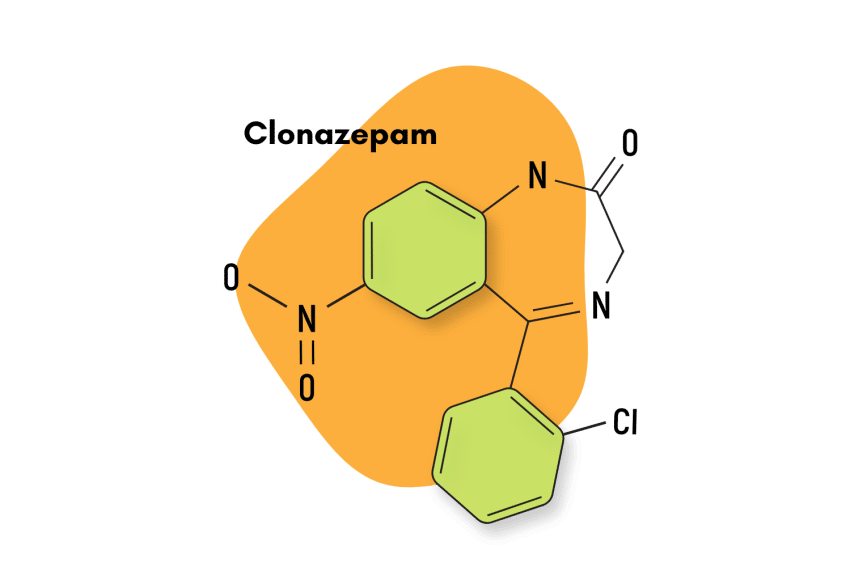Etizolam (Etilaam) Fact Sheet & Harm Reduction Guide
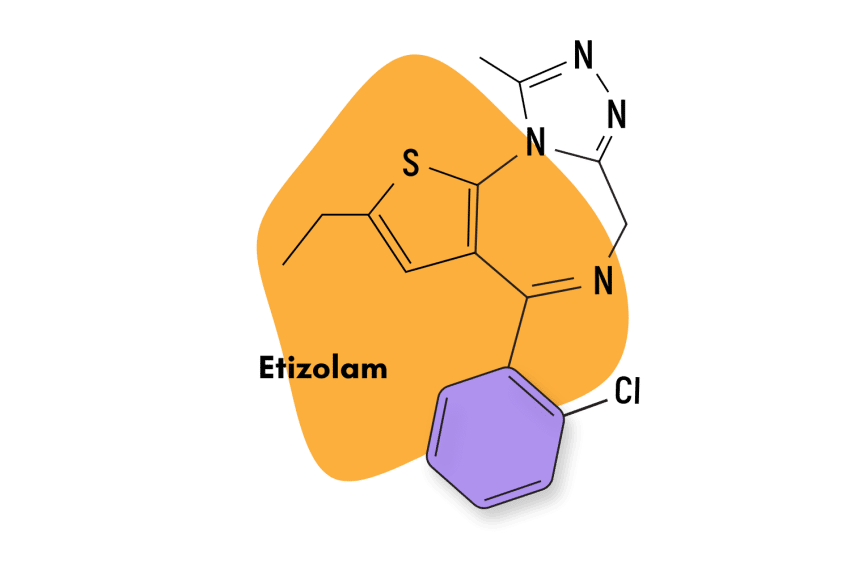
Etizolam, also known by various trade names such as Etizest and Etilaam, is a benzodiazepine analog, specifically a thienodiazepine, and one of the first designer benzodiazepine drugs to show up in the market around 2011.
Compared to other benzodiazepine drugs, etizolam displays a short-acting nature (5-7 hours) and considerable potency, with 1 mg roughly equivalent to 10 mg of diazepam.
Etizolam’s regulatory situation is somewhat of a mix-up. While it is an approved medication in places like Japan, Italy, and India, it has not received FDA approval in the United States as a medication. However, it is still legal to purchase online as a research chemical, which has led to a significant amount of misuse.
This has meant that although etizolam is federally unscheduled, individual states in the US like Alabama, Arkansas, Florida, Georgia, and others have scheduled it as a Schedule I compound, the most restrictive classification available.
Etizolam Specs
| Status | Approved medication, but not in the United States. |
| Common Dosage | 1–2 mg |
| PubChem ID | 3307 |
| CAS# | 40054-69-1 |
IUPAC Name
4-(2-Chlorophenyl)-2-ethyl-9-methyl-6H-thieno[3,2-f][1,2,4]triazolo[4,3-a][1,4]diazepine
Other Names
Etizest, Wtilaam, Etizex, Depas, Sedekopan, Pasaden, Arophalm, Capsafe, Dezolam, Eticalm, Etidrale, Etisedan, Guperies, Medipeace, Mozun, Nonnerv, Palgin, Sylazepam
Metabolism
The biotransformation of etizolam is extensive and involves both hydroxylation and conjugation. The main metabolite formed via 1′-hydroxylation is α-hydroxyetizolam and has an elimination half-life of around 8.2 hours [1]. This metabolic byproduct retains pharmacological activity comparable to that of the parent drug, indicating that metabolite action may contribute to etizolam’s clinical effects.
CYP3A4 is predicted to be the main CYP enzyme responsible for mediating etizolam metabolism.
CYP2C18 and CYP2C19 are also involved in the metabolic pathways [2]. The kidneys excrete the drug.
Duration of Effects
With a single oral dose of 0.5 mg, the average elimination half-life of etizolam is roughly 3.4 hours. However, this value may increase up to 17 hours, depending on the rate of metabolism.
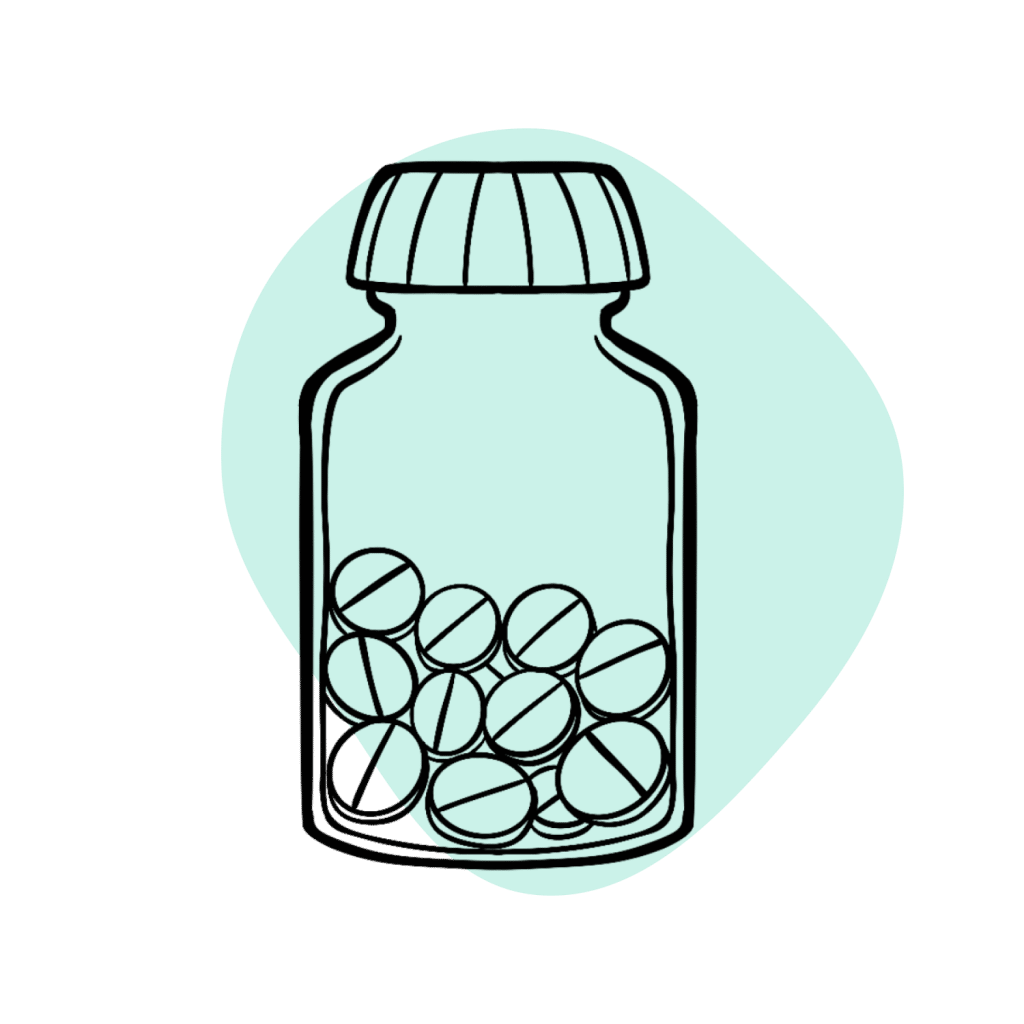
Benzodiazepine Dosage Equivalency Calculator
**Caution:** Benzodiazepines have a narrow therapeutic window. Dose equivalents may not be accurate in higher doses.
This calculator does not substitute for clinical experience and is meant to serve only as a reference for determining oral benzodiazepine equivalence.
Please consult a medical practitioner before taking benzodiazepines.
How Does Etizolam Work?
Etizolam is known to exert its effects through the classic benzodiazepine pathway. This effect increases the natural inhibitory function of GABA and results in sedative, anxiolytic, and muscle-relaxant effects.
More specifically, etizolam is selectively a full, rather than a partial, GABA-A receptor agonist and enhances GABA-induced Cl- currents [3]. Etizolam shows high potency and affinity for the alpha-1 beta 2 gamma 2S subunit combination at GABA-A receptor sites. Alpha-1 receptors mediate the sedative effects of etizolam, while alpha-2 and alpha-3 mediate the anxiolytic effects [3].
Furthermore, etizolam is also a specific antagonist at the platelet-activating factor receptor. It inhibits PAF-induced platelet aggregation by inhibiting PAF binding to the receptors on the platelet surface. PAF antagonists do not provoke an inflammatory response upon binding but rather block or lessen the effects of PAF [2]. Lastly, studies have demonstrated that etizolam mediates imipramine-like neuropharmacological and behavioral effects and exerts only minor effects on cognitive functioning.
Is Etizolam Safe? Risks & Side Effects
Etizolam, like all other benzodiazepines, carries significant risk. If it were an approved medication in the United States, it would likely receive a Schedule IV designation, which would entail that despite its recognized medical uses, it still carries the potential for misuse and dependence.
In general, when misuse is avoided, benzodiazepines are not likely to cause serious health-related events. However, the possibility of misuse is a very real factor that must be considered. The recent explosion in drug overdose deaths in the United States should serve as a stark reminder of this. Nonetheless, when it comes to etizolam, there is plenty of evidence to suggest that, among benzodiazepines, it has rare qualities that make it safer to use than most.
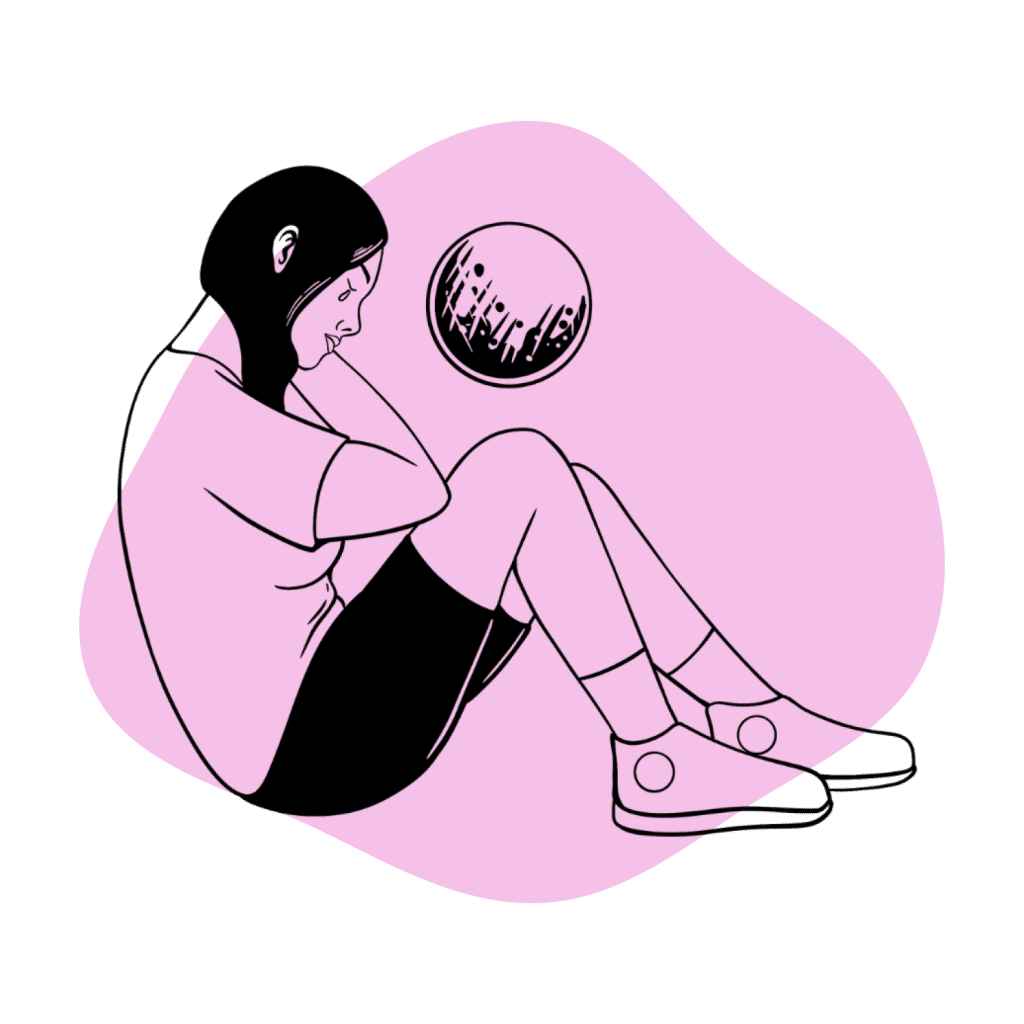
Side Effects of Etizolam
Etizolam is generally considered to be well tolerated when compared to other benzodiazepine compounds. However, it produces the usual range of side effects associated with benzodiazepines.
Regarding etizolam use, some of the most commonly reported adverse effects have been: drowsiness, sedation, muscle weakness, loss of coordination, fainting, headaches, confusion, depression, slurred speech, visual disturbances, changes in libido, and tremors.
In rare cases, etizolam has also been linked to skin lesions, blepharospasm (especially in women), and anterograde amnesia. However, etizolam has been found to have no effects on fertility, development, and teratogenicity [4]. Overall, its adverse effects profile is less significant than most benzodiazepines.
Benzodiazepine Withdrawal & Dependence
As a possible consequence of benzodiazepine therapy, withdrawal symptoms and physical dependence are well-known factors. The full extent of these risks was unknown when they were first synthesized, and benzodiazepines were prescribed far too liberally. However, with time, doctors realized their mistakes and now take much care when it comes to hedging against this possibility.
In fact, it’s now standard practice for doctors to try and limit a benzodiazepine treatment to the shortest time frame, which will not affect the treatment’s likelihood of success. Doctors worry about the possibility of a benzodiazepine dependence because, if this were to happen, it would entail the patient would have to go through a long, drawn-out process of drug tapering to get off benzodiazepines safely. Drug tapering is considered a safe procedure when done under appropriate supervision, but complications can still develop.
Because of the dangers presented by benzodiazepine withdrawal, quitting these compounds “cold turkey” is not considered an option. Indeed, withdrawal symptoms stemming from benzodiazepines, as well as alcohol, are unique in that, if left untreated, they have the possibility of becoming fatal.
However, when it comes to etizolam, it seems that the particular qualities present in this compound make it less likely to engender dependence, although, obviously, it is still a possibility which becomes likelier the more the compound is taken.
In a rat study that compared etizolam to lorazepam, it was found that etizolam had fewer chances of resulting in tolerance and dependence. It was also found that rats developed a tolerance to the anticonvulsant actions of lorazepam but not those of etizolam [5]. More studies are needed to confirm this characteristic of etizolam, but in the countries where it is available, such as India and Japan, the notion that etizolam is less liable to cause dependence is widespread. It has made etizolam one of the most prescribed benzodiazepines.
Nonetheless, etizolam’s potent, short-acting nature still has to be considered. It is well known that short-acting, potent benzodiazepines have more potential to engender dependence because they are more likely to cause abuse-related habits due to inter-dose withdrawal symptoms and other related factors.

Harm Reduction: Etizolam
It is important for prescription and recreational users to have basic harm reduction principles in mind to make smart decisions that will minimize their risk potential.
In this sense, prescription users should take special care to avoid any misuse, the most significant factor when it comes to benzodiazepine-related health events. This does not only mean avoiding recreational use but following your prescriptions to the letter and not altering anything about them.
Prescription users would also be wise to limit both the quantity and duration of their benzodiazepine treatment. The longer a drug is consumed, and the more of it is consumed, the likelier a dependence will form.
And when it comes to recreational users, there are also a few rules to stick by. They should try their hardest not to combine potent pharmacological drugs, which include alcohol, and especially more so if both compounds happen to have central nervous system-depressant properties. It is also a good idea to let a friend know if you will be taking something. Lastly, when it comes to benzodiazepines, recreational users should try to procure flumazenil and learn how to use it. Flumazenil is a benzodiazepine receptor antagonist, which means it can work to reduce overdose symptoms within the body, but only for benzodiazepines.
Benzodiazepine Harm Reduction Tips:
- 🥣 Don’t mix — Mixing benzodiazepines with other depressants (alcohol, GHB, phenibut, barbiturates, opiates) can be fatal.
- ⏳ Take frequent breaks or plan for a short treatment span — Benzodiazepines can form dependence quickly, so it’s important to stop using the drug periodically.
- 🥄 Always stick to the proper dose — The dosage of benzos can vary substantially. Some drugs require 20 or 30 mg; others can be fatal in doses as low as 3 mg.
- 💊 Be aware of contraindications — Benzodiazepines are significantly more dangerous in older people or those with certain medical conditions.
- 🧪 Test your drugs — If ordering benzos from unregistered vendors (online or street vendors), order a benzo test kit to ensure your pills contain what you think they do.
- 💉 Never snort or inject benzos — Not only does this provide no advantage, but it’s also extremely dangerous. Benzos should be taken orally.
- 🌧 Recognize the signs of addiction — Early warning signs are feeling like you’re not “yourself” without the drug or hiding your habits from loved ones.
- ⚖️ Understand the laws where you live — In most parts of the world, benzodiazepines are only considered legal if given a prescription by a medical doctor.
- 📞 Know where to go if you need help — Help is available for benzodiazepine addiction; you just have to ask for it. Look up “addiction hotline” for more information where you live. (USA: 1-800-662-4357; Canada: 1-866-585-0445; UK: 0300-999-1212).
Etizolam Drug Interactions
As mentioned before, etizolam should never be mixed with a compound that depresses the CNS, even if it’s a herbal compound like the kratom plant. Concomitant use of CNS depressants puts the user at risk of respiratory depression, the leading cause of death among drug overdoses.
Also, as a compound whose metabolism is mediated by the CYP enzyme system, etizolam users should be aware of possible CYP drug interactions.
Many compounds can interfere with the proper functioning of a given CYP enzyme, which means that the metabolism of any drug mediated by said enzyme would be affected. This could occur through inhibition, which would make metabolism less efficient and lead to an increased incidence of side effects, or it could happen through induction, which would entail an increased rate of metabolic clearance that would, in turn, make the compound less effective.
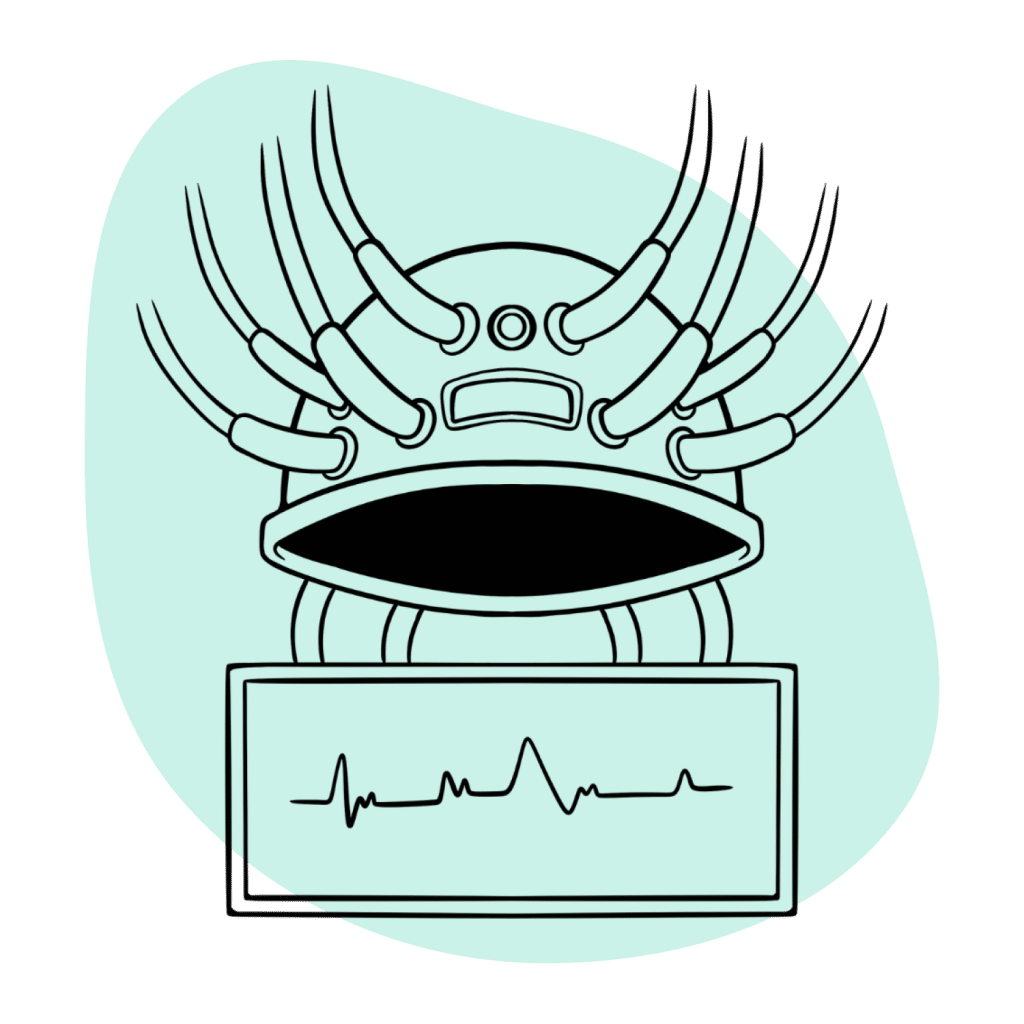
Etizolam Contraindications
Etizolam is contraindicated in patients with the following factors:
- Increased eye pressure
- Sleep disorders
- Hepatic impairment
- Porphyria
- Lung disease
- Hypersensitivity to benzodiazepines
- Pregnancy and lactation
Etizolam Dosage
According to English authorities, the proper dosage quantities of etizolam can be found below:
- Anxiety-related disorders: 0.25-0.5 mg twice daily
- Panic-related disorders: 0.5 mg twice daily
- Insomnia: 1-2 mg daily
- Maximum daily dosage: 3 mg
Anything over 2 mg is considered dangerous and should be avoided at all costs.
Similar Benzodiazepines
As they might want to switch medication, benzodiazepine users should be aware of what other compounds exist that have similar properties to their chosen benzodiazepine.
Metizolam
Metizolam —also a designer benzodiazepine compound —is one of the active metabolites of etizolam and is known to have a comparable chemical structure and a similar profile of effects. However, they’re slightly different in terms of pharmacokinetics, as metizolam has a shorter duration of action.
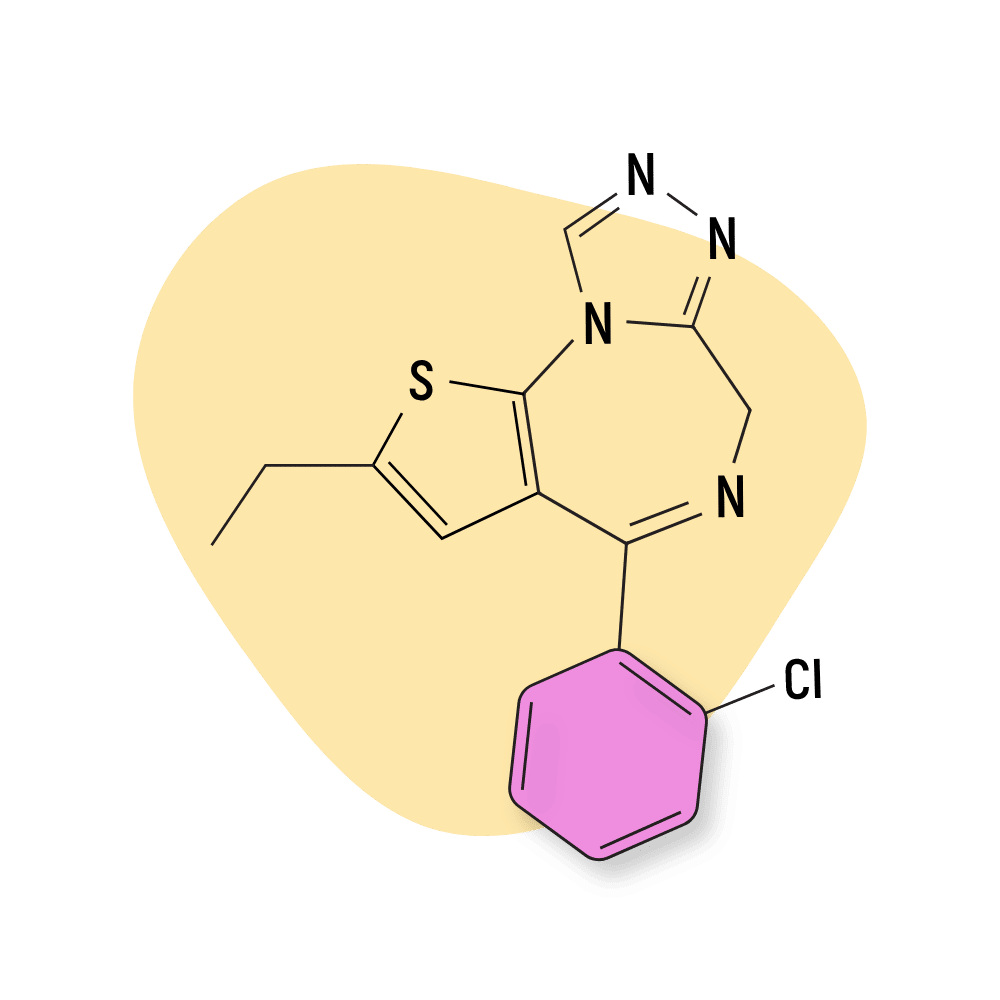
Bentazepam
Bentazepam is another member of the thienobenzodiazepine subclass, which means it has a similar structure to etizolam and roughly comparable effects. However, it does not have the pharmacological particularities unique to etizolam. Nonetheless, their pharmacokinetics are comparable as both compounds have almost identical elimination half-lives.
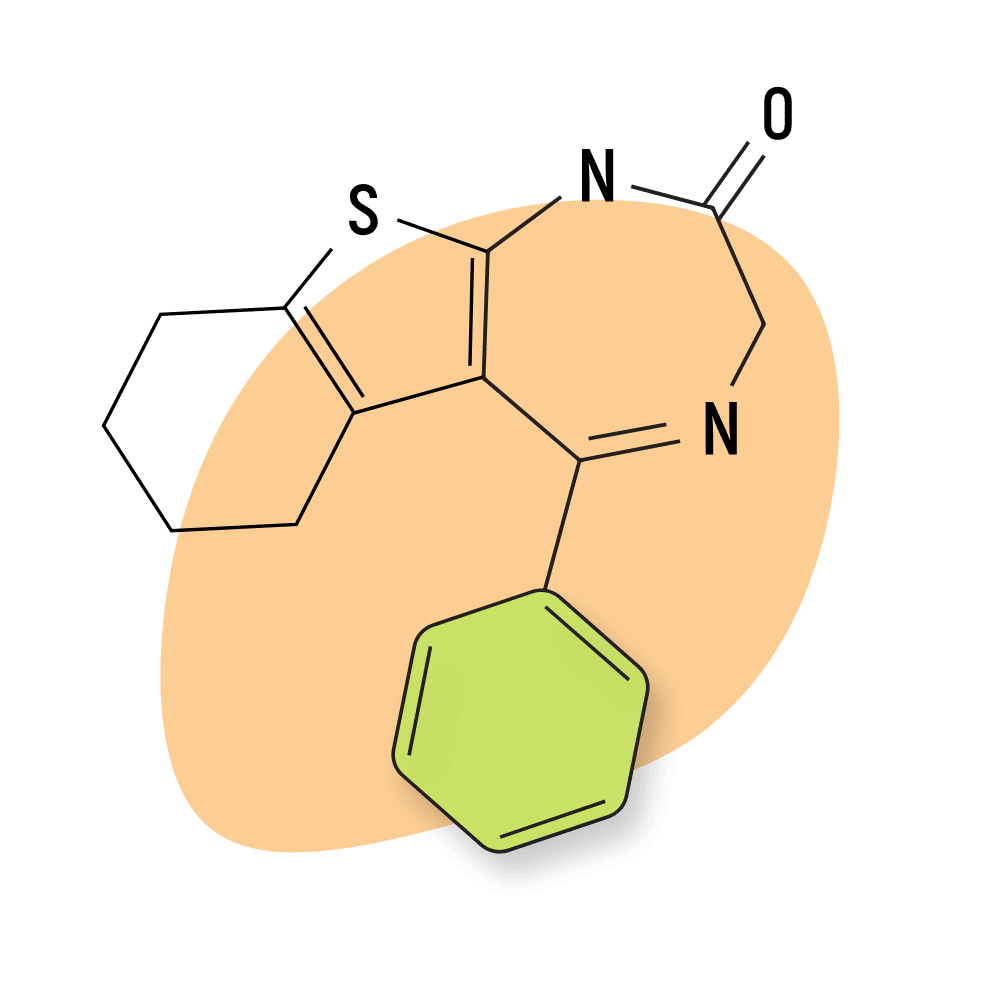
Natural Alternatives to Benzodiazepines
Natural benzodiazepine alternatives are essential because, in some instances, users might prefer sacrificing potency to medicate themselves with a compound that offers less chance of forming a physical dependency and a more benign side effects profile.
Kava
The kava plant has been found to contain active ingredients called kavalactones, which interact with GABA-A receptors to produce anxiolytic and sedative effects [6]. These effects are very similar to benzodiazepines.
However, kavalactones don’t accomplish their effects through the same mechanism of action as pharmacological benzodiazepines.

Kratom
Kratom has become a popular herbal compound in recent years due to its wide breadth of natural pharmacological effects. In low doses, kratom acts as a stimulant and a euphoric, while in mid-to-high doses, it can produce anxiolytic and sedative effects.
It also has other uses, like treating withdrawal symptoms, as a sleeping support agent, and even as a weight-loss supplement [7].
However, kratom does have the potential for physical dependence, although to a lesser degree than prescription drugs.

Etizolam FAQs
Is etizolam available as a generic medication?
Yes. The patents for etizolam are officially expired, meaning dozens of generic versions are available today.
Does etizolam have high bioavailability?
Yes. Etizolam is well absorbed from the intestines with a biological bioavailability of 93% following oral administration. Following single oral dosing of 0.5 mg etizolam, it takes around 0.9 hours to reach the peak plasma concentration of 8.3 ng/mL [4].
What is etizolam indicated for?
In the countries where it is approved as medication, etizolam is indicated for treating generalized anxiety disorder, depression, panic-related disorders, and insomnia.
References
- Fracasso, C., Confalonieri, S., Garattini, S., & Caccia, S. (1991). Single and multiple-dose pharmacokinetics of etizolam in healthy subjects. European journal of clinical pharmacology, 40(2), 181-185.
- Mikashima, H., Takehara, S., Muramoto, Y., Khomaru, T., Terasama, M., Tahara, T., & Maruyama, Y. (1987). An antagonistic activity of etizolam on platelet-activating factor (PAF) in vitro effects on platelet aggregation and PAF receptor binding. Japanese journal of pharmacology, 44(4), 387-391.
- Sanna, E., Pau, D., Tuveri, F., Massa, F., Maciocco, E., Acquas, C., … & Biggio, G. (1999). Molecular and neurochemical evaluation of the effects of etizolam on GABAA receptors under normal and stress conditions. Arzneimittelforschung, 49(02), 88-95.
- World Health Organization (2015, November). Etizolam (INN) Pre-Review Report. Retrieved September 6, 2022, from https://erowid.org/pharms/etizolam/etizolam_article1_who_2016.pdf
- Sanna, E., Busonero, F., Talani, G., Mostallino, M. C., Mura, M. L., Pisu, M. G., … & Biggio, G. (2005). Low tolerance and dependence liabilities of etizolam: molecular, functional, and pharmacological correlates. European journal of pharmacology, 519(1-2), 31-42.
- Sarris, J., Stough, C., Bousman, C. A., Wahid, Z. T., Murray, G., Teschke, R., … & Schweitzer, I. (2013). Kava in the treatment of generalized anxiety disorder: a double-blind, randomized, placebo-controlled study. Journal of clinical psychopharmacology, 33(5), 643-648.
- Eastlack, S. C., Cornett, E. M., & Kaye, A. D. (2020). Kratom—Pharmacology, clinical implications, and outlook: a comprehensive review. Pain and therapy, 9(1), 55-69.

